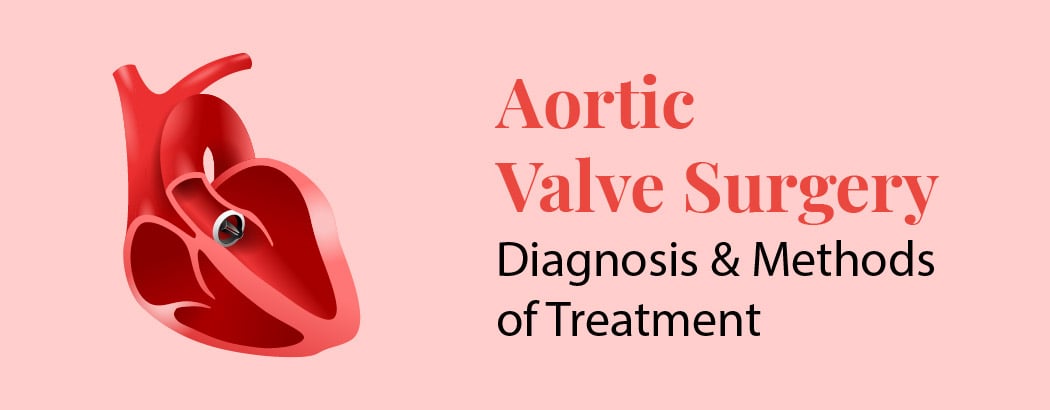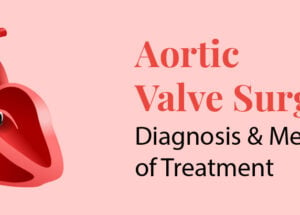Aortic Valve Surgery: Diagnosis and Methods of Treatment
April 24, 2025

Individuals with aortic valve disease often require life-saving treatment through aortic valve surgery. This valve connects the heart to the aorta and plays a role in overseeing healthy blood flow. For those with a leaky valve, the procedure can significantly enhance heart function. Depending on the case, surgeons may perform either open-heart surgery or a minimally invasive approach that uses smaller incisions and promotes quicker recovery.
What is Aortic Valve Replacement Surgery?
The heart has four valves that regulate blood flow, and the aortic valve is one of them. It sits between the left chamber of the heart and the aorta, which is the main artery that carries oxygen-rich blood to the body. The role of these valves is to ensure that blood flows in the correct direction through the heart.
When the heart contracts, the aortic valve opens to allow blood to move from the left chamber into the aorta. As the heart relaxes, the valve closes to stop blood from flowing backward. If the valve becomes damaged or diseased, it disrupts this process, forcing the heart to work harder to maintain circulation.
Some people have congenital heart defects that affect valve function. Aortic valve surgery can correct these issues and help reduce the possibility of complications associated with valve disease.
This surgery is used to treat conditions such as aortic valve regurgitation, where the valve leaks, or aortic valve stenosis, where the valve opening becomes too narrow.
There are two main types of aortic valve surgery:
- Aortic Valve Repair, where the surgeon preserves as much of the natural valve as possible and fixes the damaged areas.
- Surgical Aortic Valve Replacement (SAVR) involves the surgeon removing the damaged valve and replacing it with a new one.
The choice of surgery depends on several factors, including the patient’s age, medical history, heart structure, and diagnostic test results. The surgeon will explain all available options and recommend the most suitable treatment plan.
Diagnosis of Aortic Valve Disease
To diagnose aortic valve disease, your doctor will ask you questions about your medical history and symptoms. Your cardiologist may hear a whooshing sound, known as a heart murmur, when listening to your heart with a stethoscope.
The tests listed below are customized for each patient, and not all diagnostic tests may be included.
- Echocardiogram: The echocardiogram uses sound waves to create pictures of the beating heart. It shows how blood flows through the heart and the valves. This can help assess the severity of the valve disease.
- Electrocardiogram (ECG or EKG): The ECG records the electrical activity of the heart. Through this, we understand how the heart is beating. Sticky patches are placed on the chest and legs. A wire connects the patches to a computer that will print the results.
- Chest X-ray: A chest X-ray reveals the condition of the heart and lungs. It will indicate if the heart is enlarged, which is a sign of aortic valve disease or heart failure.
- Cardiac MRI: The cardiac MRI uses magnetic fields and radio waves to create detailed pictures of the heart. This test can determine the severity of the aortic valve disease and measure the size of the aorta.
- Cardiac computerized tomography (CT) scan: A CT scan uses a series of X-rays to create detailed images of the heart and valves. The test can help measure the size of the aorta and look at the aortic valve more closely. A CT scan can determine the severity of the aortic valve stenosis.
- Exercise or stress tests: These tests involve walking on a treadmill or riding a stationary bike while an ECG is being done. This helps to see how the heart reacts to physical activity and whether you have valve disease symptoms during exercise.
- Cardiac catheterization: This test is used infrequently to assess the severity of aortic valve disease and to diagnose conditions that other tests cannot. A thin, flexible tube is inserted into a blood vessel in the groin or arm and guided to the heart. This provides more details about blood flow and the heart’s dynamics, as well as its overall functioning.
Treatment Options for Aortic Valve Disease
The treatment involves aortic valve surgery. Doctors will use an anaesthetic to put you in a sleep-like state before surgery. They will connect you to a heart-lung bypass machine. This machine will keep the blood pumping through your body during the aortic valve surgery. The surgery done could be either one of the following:
Open-heart surgery: A surgical cut called an incision will be made through the middle of the chest to reach the heart.
Minimally invasive heart surgery involves making smaller incisions. It uses a “J” incision. This type of surgery does not involve cutting any significant muscle or breaking any bones. Resultantly, you may have a faster recovery.
If you have very mild symptoms, you may not need surgery. Instead, you may be prescribed medications to manage the symptoms. You may be prescribed blood thinners or blood pressure medications. Some people may be prescribed antiarrhythmics or medications that manage their heart’s rhythm.
Aortic Valve Surgery Procedure
- Aortic valve repair: This is done with an open-heart surgery. The surgery may involve patching holes or tears in the aortic valve cusps, adding support to the roots of the valve, separating valve cusps that have connected together, removing tissue to allow the valve to close more tightly, and reinforcing the annulus, which is a ring around the valve.
- Transcatheter aortic valve implantation: This is also called balloon valvuloplasty and is done to repair the valve. A thin, flexible tube called a catheter is inserted into the arm or groin. It is then guided to the diseased aortic valve. A balloon at the tip of the catheter is inflated, which expands the valve opening.
- Aortic valve replacement: The surgeon removes the aortic valve and replaces it with a mechanical valve. Sometimes a valve made with cow, pig, or human tissues is used.
Recovery and Outlook for Aortic Valve Surgery
Your recovery depends on your specific heart condition and the type of procedure you have had. You will be given fluids and medicines through IV. You may also be given oxygen through a mask. As you recover, the healthcare team looks for any signs of infection, checks that your breathing, blood pressure, and heart rate are normal. You will be asked to walk regularly. You may have to stay in the hospital for five to seven days.
Post your discharge, you will be told not to drive or lift anything very heavy for six weeks. You will also have to go for regular follow-up appointments with the doctor. Imaging tests will be done to ensure that the valve is working correctly. If you have a mechanical valve, you may have to take blood thinners for life to prevent clots. You will be recommended to eat a healthy, balanced diet, engage in regular exercise, manage stress, and stop smoking or using tobacco.
What to Consider Before and After Aortic Valve Surgery
Discuss the risks and benefits of aortic valve surgery with your doctor. Understand what is involved and what the outlook will be after the surgery. As the surgery is being planned, consider discussing it with friends and family. Seek help to prepare and recover. It is essential to have a support system nearby to help you recover physically and emotionally from a significant life event.
Frequently Asked Questions
1. How serious is heart valve replacement surgery?
Heart valve replacement surgery is a major procedure that carries potential risks and complications. Still, it is generally safe and effective when performed by skilled surgeons at high-volume medical centers.
2. What is the success rate of aortic valve replacement surgery?
Aortic valve replacement surgery is highly successful, and many people go on to live for years after the procedure. In fact, one study showed that Transcatheter Aortic Valve Replacement (TAVR) had a success rate of 92%. Another study found that for low-risk patients, Surgical Aortic Valve Replacement (SAVR) had a 5-year survival rate of 92.9%. These numbers are encouraging and show how effective these treatments can be.
3. How long does aortic valve replacement surgery take?
Aortic valve replacement surgery, often referred to as open-heart surgery, usually takes between 2 to 5 hours. The exact length can vary based on the details of the procedure and whether the surgeon needs to perform any additional work during the same operation.
4. What is the average age for aortic heart valve replacement?
The average age for aortic valve replacement (AVR) is generally between 65 and 75 years.
5. Can a heart valve be replaced without open-heart surgery?
Yes, heart valves can be replaced without the need for open-heart surgery. Minimally invasive options, such as Transcatheter Aortic Valve Replacement (TAVR) and Transcatheter Mitral Valve Replacement (TMVR), make this possible. These procedures use a thin, flexible tube called a catheter, which is guided through a blood vessel to the heart to replace the damaged valve. It’s a gentler alternative to traditional surgery and often comes with a quicker recovery time.
6. What are the risks of aortic valve replacement?
Aortic valve replacement surgery carries potential risks, such as bleeding, blood clots, infections, stroke, or issues with the new valve. Patients may also experience arrhythmias, or irregular heartbeats, which could require treatment with a pacemaker.






